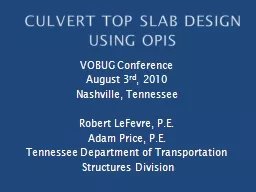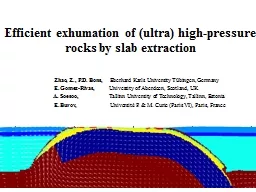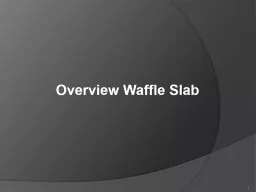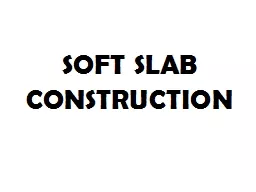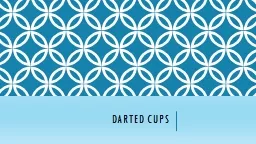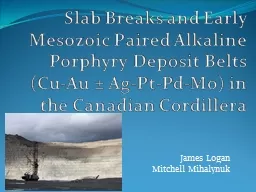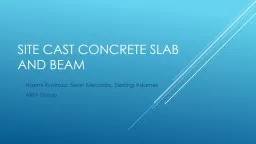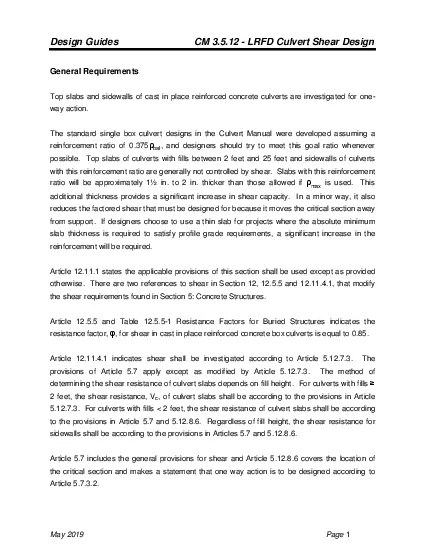PPT-Culvert Top Slab Design Using Opis
Author : cheryl-pisano | Published Date : 2016-03-13
VOBUG Conference August 3 rd 2010 Nashville Tennessee Robert LeFevre PE Adam Price PE Tennessee Department of Transportation Structures Division Background Before
Presentation Embed Code
Download Presentation
Download Presentation The PPT/PDF document "Culvert Top Slab Design Using Opis" is the property of its rightful owner. Permission is granted to download and print the materials on this website for personal, non-commercial use only, and to display it on your personal computer provided you do not modify the materials and that you retain all copyright notices contained in the materials. By downloading content from our website, you accept the terms of this agreement.
Culvert Top Slab Design Using Opis: Transcript
Download Rules Of Document
"Culvert Top Slab Design Using Opis"The content belongs to its owner. You may download and print it for personal use, without modification, and keep all copyright notices. By downloading, you agree to these terms.
Related Documents

